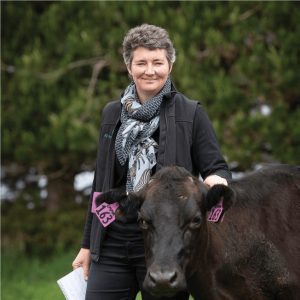 When you get a few years under your belt, a few kms on the clock, it’s interesting to reflect on history and see how things change and evolve.
When you get a few years under your belt, a few kms on the clock, it’s interesting to reflect on history and see how things change and evolve.
After a period of excess usually comes a drive for efficiency, followed by encouragement, and incentivisation and then regulation to make it happen.
Just as we have reached peak cow, maybe peak fertiliser is a thing too? Just like a plant in the wrong place is a weed, so too fertiliser in the wrong place or at the wrong rate is a potential pollutant.
Farmers are moving to reduce, recycle and re-engineer their fertiliser use, understanding if they don’t do it themselves, they could be forced to with regulation.
In our special report, we cover how New Zealand agriculture would feel a huge financial impact (-$1.6 billion) of removing nitrogen, as Greenpeace have mooted.
Both of the big fertiliser companies report farmers are moving to coated products, to cut down on loss of nutrients to volatilisation and by leaching into groundwater and waterways.
It seems to me the use of these products is a no-brainer – why would you take the risk of using a product that could potentially have a loss of up to 18% of the nitrogen spread? At $560/tonne of urea you could potentially be losing $101 worth of fertiliser into the atmosphere and waterways. Why do fertiliser companies continue selling a product with such a high pollution potential, when the reengineering exists for halving the pollution potential of that product?
Smart farmers like James and Melissa Barbour at Trewithen Farm add as little N as possible, in small dollops and only when the temperature, soil and moisture conditions are right, to minimise losses.
Effluent areas are applied with recycled nutrients and avoid applying on creeks, drains and stock camp areas. Grass has to be actively growing before fertiliser application and the Barbours are using some coated product and looking at more (pg 46).
Pamu are investigating applying nitrogen through their irrigation system, an exciting development called fertigation allowing them to apply 1.5kg N/ha/day through a centre pivot (pg 58) and reducing the risk of potentially losing a month’s worth of nitrogen due to a large rain event. They have measured a 36% reduction in total N use in the first two seasons.
With the N cap of 190kg N/ha/year introduced in the Action for Healthy Waterways legislation farmers will need to reduce, recycle and re-engineer nutrient applications with clever technologies like these.
Irricon environmental engineer Keri Johnston takes an in-depth look at the Action for Healthy Waterways policy recommendations and how they will affect farmers and she says the policies are more balanced than the earlier discussion document but details around some policies are yet to come (pg 68).
And if you are feeling a bit overwhelmed by all of that, catch up with Rachel Grunwell’s pieces of the wellness puzzle (pg 82). There are great tips in there for all of us – as she said, you don’t need to feel overwhelmed – just choose one piece of the puzzle and start making small changes – you will feel better for it.





